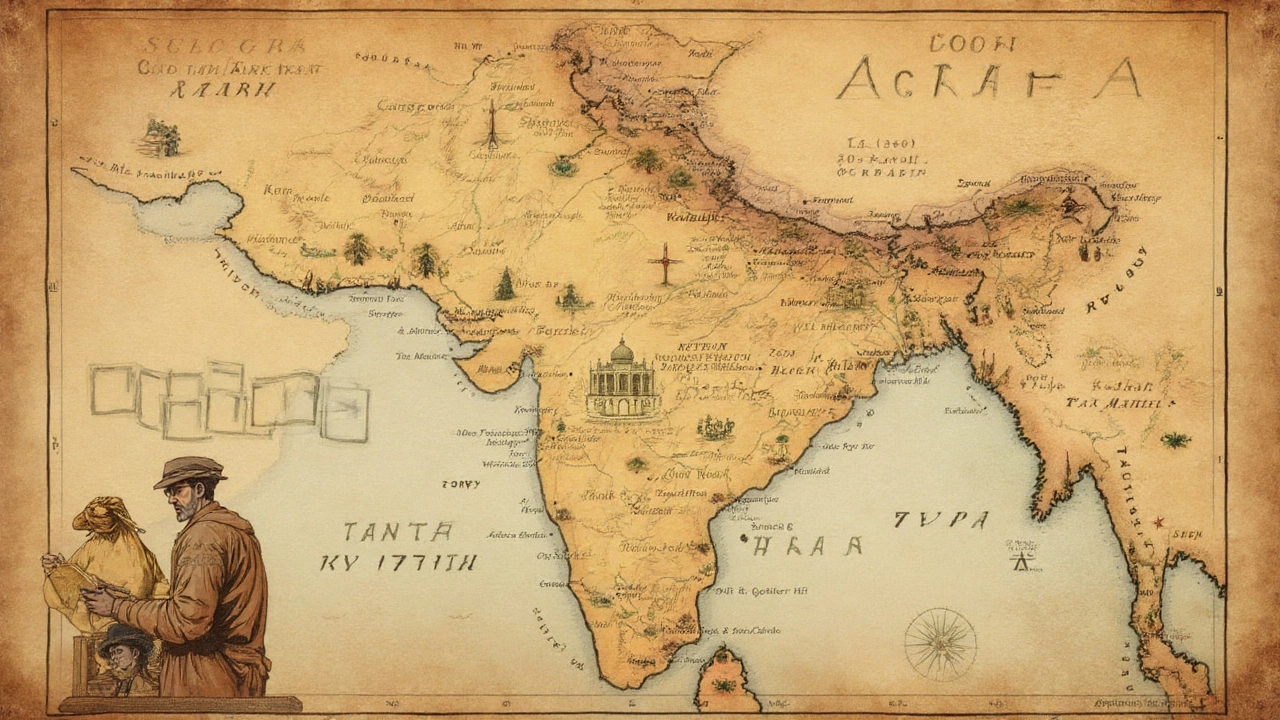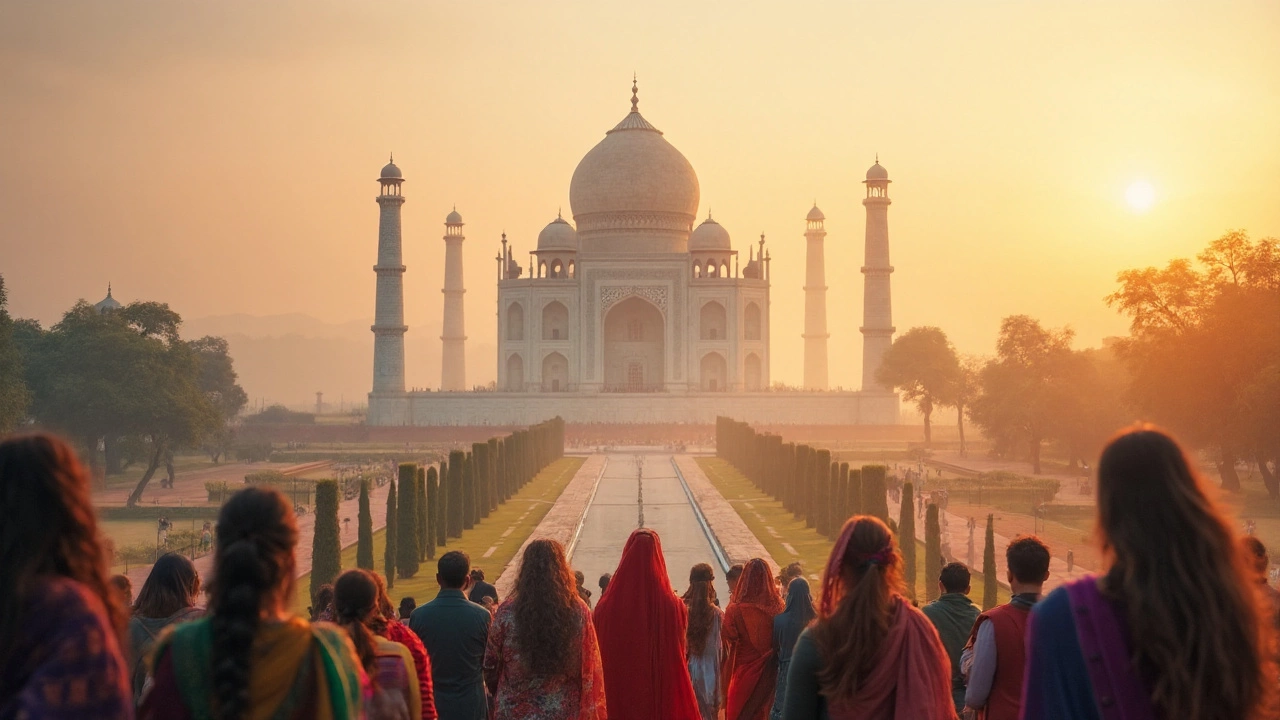Picture India, and you probably see a gleaming white marble palace rising in the morning mist. That’s the Taj Mahal—a monument every traveler dreams of seeing one day. But here’s something more people mix up than you’d think: Is the Taj Mahal actually in northern or southern India? This isn’t just a map quiz trick. For anyone planning a once-in-a-lifetime trip, or even daydreamers building bucket lists, knowing exactly where the Taj sits makes all the difference—especially in a country where the north and south can feel like different worlds, from climate to cuisine to culture.
The Taj Mahal’s Spot on the Map
First, let’s settle this once and for all. The Taj Mahal is located in Agra, a city in the northern Indian state of Uttar Pradesh. You’ll find Uttar Pradesh wedged between New Delhi and the Gangetic plains, making Agra part of India’s north both geographically and culturally. On the map, Agra is about 200 kilometers (125 miles) southeast of Delhi, and around 1,800 kilometers (over 1,100 miles) from Chennai down in the south. So, if you’re ever stuck in a local’s conversation or a travel quiz, you know for sure—the Taj Mahal is in the north, not the south.
Why does this matter? Well, north India and south India feel like different countries in many ways: languages spoken, food, clothes, and even music. If you’ve ever tried spicy dosas in Bangalore (south) and compared them with the buttery naan of Delhi (north), you know what I mean. Agra falls into that “northern” culture, with its Mughal-influenced cuisine, Hindi as the main language, and those chilly winter mornings where you see the Taj rising through the fog. Even when you look at travel categories and tour groups, “North India” is usually code for palaces, forts, and old epic cities—while “South India” shouts beaches, spice plantations, and temple towns.
Still not convinced? Let’s look at some quick stats that make it clear:
| Feature | Taj Mahal Region |
|---|---|
| State | Uttar Pradesh |
| City | Agra |
| Latitude | 27.1751° N |
| Proximity to Delhi | ~200 km (125 miles) south-east |
| Main Language | Hindi |
| Architectural Style | Mughal |
| Average Winter Temp | 7–24°C (44–75°F) |
The Story Behind the Taj Mahal's Location
So why is one of the world’s most famous buildings sitting on the banks of the Yamuna River in Agra, rather than in Mumbai, Bangalore, or Chennai? The answer is all about love, power, and the ambitions of the Mughal emperors. In the early 17th century, Agra was not a sleepy tourist stop—it was the glittering capital of the Mughal Empire. Rulers like Shah Jahan, the man behind the Taj, chose Agra as the heart of their domain. It was already brimming with grand architecture, bustling markets, and the river that added a natural defense and a beautiful setting for palaces.
When Shah Jahan’s wife Mumtaz Mahal died in 1631, he wanted to build something “unmatched in majesty,” as chroniclers wrote. He looked to Agra’s location for inspiration. He asked his architects to place the mausoleum where the moonlight shimmered on the Yamuna, reflecting the white marble almost magically. It wasn’t just about beauty—the site was symbolic. The river ran next to gardens inspired by Persian ‘paradise’ layouts, another Mughal passion.
The Taj wasn’t plopped down in isolation, either. At that time, the whole area was packed with royal buildings, gardens, and bustling bazaars. The location anchored the Taj to Mughal power, to the movement of trade and royalty along the river. That’s why you don’t find monuments like the Taj in southern cities like Hyderabad or Trivandrum, even though those places have their own grand buildings. The architecture of the south, with its sprawling Hindu temples and Dravidian style, looks totally different. Head north, and you’ll spot red sandstone forts and domed mausoleums—the signature of the Mughals who shaped Agra, Delhi, and even Lahore in Pakistan.
This is one reason travelers still flock to the north for “heritage tours.” You get to feel the lingering echoes of the emperors, with the Taj Mahal as the shining showpiece.

Planning a Taj Mahal Visit: Things to Know
If you’re mapping out a trip, you’ll want the inside scoop. First thing to remember—Agra isn’t just another pit stop. The city draws over 8 million visitors each year. Most people arrive from Delhi, which is just a two-to-three-hour train ride or a four-hour car trip away if the traffic isn’t being its usual beast. Agra is perfectly positioned for the so-called “Golden Triangle” travel circuit (that’s Delhi, Agra, and Jaipur), making it one of the easiest world heritage sites to visit in India. For those coming from the south, flights and overnight trains bring you straight into Agra’s railway stations and airport.
- Best time to visit: October to March. Agra is in the north, which means cooler, drier weather and, yes, morning mists that make the Taj look truly magical.
- What to wear: Winters mean jackets and scarves; summers are sweaty, with temperatures above 40°C, so definitely pack light cottons and sunscreen.
- Ticket tips: Foreigners pay more than Indians—a reality at most Indian heritage sites. Early morning tickets are best for photos and for beating crowds.
- Closed days: The Taj Mahal is closed to the public every Friday. This catches people off-guard more than you’d expect!
- Photography: Cameras (except video) are allowed, but drones and tripods are banned. Security is tight, so leave big bags at your hotel.
- Other things to see: The Agra Fort and Mehtab Bagh gardens (best sunset views) are a must. Don’t just rush in and out; give the city a day or two—it’s worth it.
One thing solo travelers or families with kids should know: Agra can get intense with crowds and touts, especially on weekends or at sunrise. Schedule breaks, sip sweet lassi at a rooftop café, and pace yourself. If you travel between November and February, bring layers. It can swing from icy at dawn to toasty by lunch.
Quirky Facts & Extra Curiosities About the Taj Mahal’s Place in the North
So you know the Taj Mahal is in the north, but did you know there’s a small but vocal group of people debating if it actually was meant to stand somewhere else? Old legends say Shah Jahan once considered building a “mirror Taj” in black marble across the river, so he could gaze at his own work forever. That never happened—but the Mehtab Bagh gardens on the opposite bank still showcase the monument’s perfect reflection, which you can enjoy today.
Another fun slice of history: More than 20,000 artisans and craftsmen worked for years on the Taj. Agra was flooded with specialists from Persia, Turkey, and Central Asia, bringing skills that you still see in north India’s fabrics, design, and even street snacks. The city’s famous ‘petha’ (a sweet candy made from ash gourd) supposedly became iconic thanks to all these workers needing quick energy as they toiled day and night.
- The marble in the Taj comes from Makrana in Rajasthan—another northern state, confirming the regional connections.
- During full moons, the Taj Mahal glows, and there are special night viewings (tickets are scarce—book ahead!).
- North India’s “winter fog” sometimes hides the Taj completely in the morning. Don’t panic; the view opens up by 10 am.
- The Yamuna River was once much wider, shaping Agra’s landscape. Now it’s narrower and sometimes dried up near the banks—reminding us that landscapes, like empires, change.
- Agra’s markets are famous for leather goods and marble handicrafts, all styled with Mughal flair, not South Indian motifs.
- Street food outside the Taj gates? Try the spicy kachoris and samosas—very much flavors of the north, rather than, say, South Indian idlis.
For travelers interested in culture, noticing these little differences—like hearing mostly Hindi and Urdu, not Tamil or Malayalam—deepens the experience. The Taj Mahal may be India’s most famous building, but its roots and spirit are soaked in the history, language, and rhythm of the north. It’s more than a monument; it’s basically the north’s dazzling calling card. And honestly? No photo comes close to seeing it in person, especially when you remember exactly where you're standing on the map.
